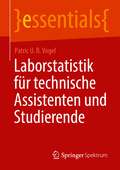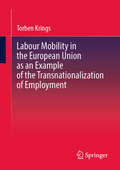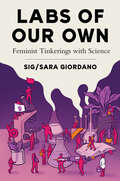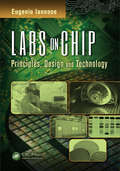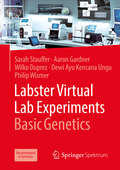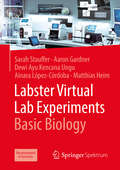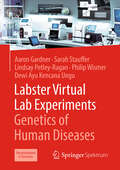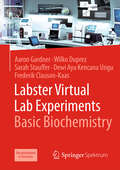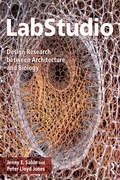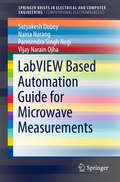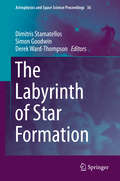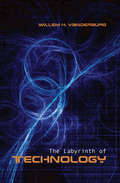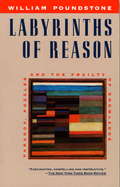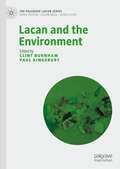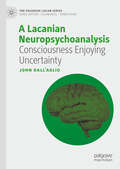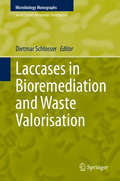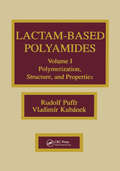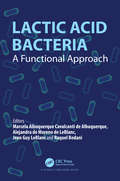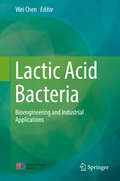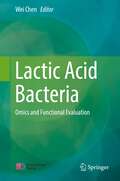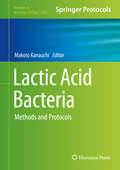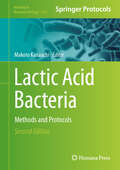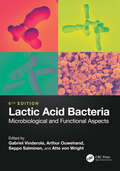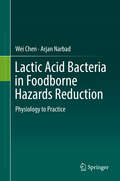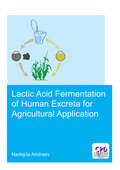- Table View
- List View
Laborstatistik für technische Assistenten und Studierende (essentials)
by Patric U. VogelIn diesem essential wird die Anwendung von statistischen Analysen von normalverteilten Daten im Laboralltag dargestellt. Hierzu zählen die Berechnung von Mittelwert und Standardabweichung sowie die Erstellung von einfachen grafischen Abbildungen. Im Anschluss werden Tests auf Ausreißer und Normalverteilung sowie Stichprobenberechnungen anhand einfacher Beispiele vorgestellt. Abschließend erlernen die Leser*innen den Vergleich von Datengruppen mittels t-test und ANOVA, das Erkennen von Zusammenhängen mittels linearer Regression und Korrelation sowie die Anwendung von Konfidenzintervallen. Zusätzlich werden übliche Fehlerquellen bei der Anwendung statistischer Methoden erklärt.
Labour Mobility in the European Union as an Example of the Transnationalization of Employment
by Torben KringsThis book examines the changing significance of intra-European labor mobility in the 21st century. The focus is on the driving forces, the labor market effects and the regulation of this mobility. It is shown that there is a demand for workers with different qualifications in the "post-industrial" societies of Western Europe. This demand is primarily met by migration from the enlarged EU. However, this is no longer traditional labor migration, but the mobility of EU citizens. This brings with it new opportunities, but also challenges in a transnational mobility space, which is also a space of inequality.
Labs of Our Own: Feminist Tinkerings with Science
by Sig / GiordanoFrom climate change to COVID-19 to reproductive justice, there has been deep political polarization around science. Labs of Our Own provides a unique entry point into these twenty-first-century science wars by focusing on our affective relationships to science. The book delves into various sites where scientists, teachers, artists, and activists claim to create more democratic access to science—from DIY biology community labs to feminist classrooms to activist science practitioners. The reader will find that these claims for and attempts at democratic sciences not only impact what counts as science and who counts as a scientist but reconfigure who is included in the proper public. Instead of arguing for a knee-jerk defense of science against right-wing attacks, Labs of Our Own builds the case for a feminist, antiracist, decolonial, queer science tinkering practice that intentionally, politically, and ethically acts to produce new challenges to the definition and boundaries of the human.
Labs on Chip: Principles, Design and Technology (Devices, Circuits, and Systems)
by Eugenio IannoneLabs on Chip: Principles, Design and Technology provides a complete reference for the complex field of labs on chip in biotechnology. Merging three main areas— fluid dynamics, monolithic micro- and nanotechnology, and out-of-equilibrium biochemistry—this text integrates coverage of technology issues with strong theoretical explanations of design techniques. Analyzing each subject from basic principles to relevant applications, this book: Describes the biochemical elements required to work on labs on chip Discusses fabrication, microfluidic, and electronic and optical detection techniques Addresses planar technologies, polymer microfabrication, and process scalability to huge volumes Presents a global view of current lab-on-chip research and development Devotes an entire chapter to labs on chip for genetics Summarizing in one source the different technical competencies required, Labs on Chip: Principles, Design and Technology offers valuable guidance for the lab-on-chip design decision-making process, while exploring essential elements of labs on chip useful both to the professional who wants to approach a new field and to the specialist who wants to gain a broader perspective.
Labster Virtual Lab Experiments: Basic Genetics
by Sarah Stauffer Aaron Gardner Wilko Duprez Dewi Ayu Ungu Philip WismerThis textbook helps you to prepare for both your next exams and practical courses by combining theory with virtual lab simulations. With the “Labster Virtual Lab Experiments” book series you have the unique opportunity to apply your newly acquired knowledge in an interactive learning game that simulates common laboratory experiments. Try out different techniques and work with machines that you otherwise wouldn’t have access to.In this volume on “Basic Genetics” you will learn how to work in a laboratory with genetic background and the fundamental theoretical concepts of the following topics:Mendelian InheritancePolymerase Chain ReactionAnimal GeneticsGene ExpressionGene RegulationIn each chapter, you will be introduced to the basic knowledge as well as one virtual lab simulation with a true-to-life challenge. Following a theory section, you will be able to play the corresponding simulation. Each simulation includes quiz questions to reinforce your understanding of the covered topics. 3D animations will show you molecular processes not otherwise visible to the human eye. If you have purchased a printed copy of this book, you get free access to five simulations for the duration of six months. If you’re using the e-book version, you can sign up and buy access to the simulations at www.labster.com/springer.If you like this book, try out other topics in this series, including “Basic Biology”, “Basic Biochemistry”, and “Genetics of Human Diseases”.
Labster Virtual Lab Experiments: Basic Biology
by Sarah Stauffer Aaron Gardner Dewi Ayu Ungu Ainara López-Córdoba Matthias HeimThis textbook helps you to prepare for both your next exams and practical courses by combining theory with virtual lab simulations. With the “Labster Virtual Lab Experiments” book series you have the unique opportunity to apply your newly acquired knowledge in an interactive learning game that simulates common laboratory experiments. Try out different techniques and work with machines that you otherwise wouldn’t have access to.In this volume on “Basic Biology” you will learn how to work in a biological laboratory and the fundamental theoretical concepts of the following topics: Lab SafetyMitosisMeiosisCellular RespirationProtein SynthesisIn each chapter, you will be introduced to the basic knowledge as well as one virtual lab simulation with a true-to-life challenge. Following a theory section, you will be able to play the corresponding simulation. Each simulation includes quiz questions to reinforce your understanding of the covered topics. 3D animations will show you molecular processes not otherwise visible to the human eye.If you have purchased a printed copy of this book, you get free access to five simulations for the duration of six months. If you’re using the e-book version, you can sign up and buy access to the simulations at www.labster.com/springer.If you like this book, try out other topics in this series, including “Basic Genetcis”, “Basic Biochemistry”, and “Genetics of Human Diseases”.
Labster Virtual Lab Experiments: Genetics of Human Diseases
by Sarah Stauffer Aaron Gardner Philip Wismer Lindsay Petley-Ragan Dewi Ayu Kencana UnguThis textbook helps you to prepare for your next exams and practical courses by combining theory with virtual lab simulations. The “Labster Virtual Lab Experiments” series gives you a unique opportunity to apply your newly acquired knowledge in a learning game that simulates exciting laboratory experiments. Try out different techniques and work with machines that you otherwise wouldn’t have access to. <p><p> In this book, you’ll learn the fundamental concepts of the genetics of human diseases focusing on: <p> Monogenic Disorders - Cytogenetics - Medical Genetics - Viral Gene Therapy
Labster Virtual Lab Experiments: Basic Biochemistry
by Sarah Stauffer Aaron Gardner Wilko Duprez Dewi Ayu Kencana Ungu Frederik Clauson-KaasThis textbook helps you to prepare for your next exams and practical courses by combining theory with virtual lab simulations. The “Labster Virtual Lab Experiments” series gives you a unique opportunity to apply your newly acquired knowledge in a learning game that simulates exciting laboratory experiments. Try out different techniques and work with machines that you otherwise wouldn’t have access to.In this book, you’ll learn the fundamental concepts of basic biochemistry focusing on:Ionic and Covalent BondsIntroduction to Biological MacromoleculesCarbohydratesEnzyme KineticsIn each chapter, you’ll be introduced to one virtual lab simulation and a true-to-life challenge. Following a theory section, you’ll be able to play the relevant simulation that includes quiz questions to reinforce your understanding of the covered topics. 3D animations will show you molecular processes not otherwise visible to the human eye.If you have purchased a printed copy of this book, you get free access to five simulations for the duration of six months. If you’re using the e-book version, you can sign up and buy access to the simulations at www.labster.com/springer.If you like this book, try out other topics in this series, including “Basic Biology”, “Basic Genetics”, and “Genetics of Human Diseases”.
LabStudio: Design Research between Architecture and Biology
by Jenny E. Sabin Peter Lloyd JonesLabStudio: Design Research between Architecture and Biology introduces the concept of the research design laboratory in which funded research and trans-disciplinary participants achieve radical advances in science, design, and applied architectural practice. The book demonstrates to natural scientists and architects alike new approaches to more traditional design studio and hypothesis-led research that are complementary, iterative, experimental, and reciprocal. These originate from 3-D spatial biology and generative design in architecture, creating philosophies and practices that are high-risk, non-linear, and design-driven for often surprising results.Authors Jenny E. Sabin, an architectural designer, and Peter Lloyd Jones, a spatial biologist, present case studies, prototypes, and exercises from their practice, LabStudio, illustrating in hundreds of color images a new model for seemingly unrelated, open-ended, data-, systems- and technology-driven methods that you can adopt for incredible results.
LabVIEW based Automation Guide for Microwave Measurements
by Satya Kesh Dubey Naina Narang P. S. Negi V. N. OjhaThe book is focused on measurement automation, specifically using the LabView tool. It explains basic measurements in a simplified manner with appropriate step-by-step explanations and discussions of instrument capabilities. It touches upon aspects of measurement science, microwave measurements and software development for measurement. The book can be used as a guide by technicians, researchers and scientists involved in metrology laboratories to automate measurements. The book explains the development process for automation of measurement systems for every step of the software development lifecycle. It covers system design and automation policy creation. The book uses a top-down approach which enables the reader to relate their own problems and develop a system with their own analysis. The book includes many examples, illustrations, flowcharts, measurement results and screenshots of a worked-out automation software for microwave measurement. The book includes discussions on microwave measurements-attenuation, microwave power and E-field strength. The contents of this book will be of interest to students, researchers and scientists working in the field of electromagnetism, antennas, communication and electromagnetic interference/electromagnetic compatibility (EMI/EMC).
The Labyrinth of Star Formation
by Dimitris Stamatellos Simon Goodwin Derek Ward-ThompsonThis volume contains the proceedings from the conference "The Labyrinth of Star Formation" that was held in Crete, Greece, in June 2012, to honour the contributions to the study of star formation made by Professor Anthony Whitworth of Cardiff University. The book covers many aspects of theoretical and observational star formation: low-mass star formation; young circumstellar discs; computational methods; triggered star formation; the stellar initial mass function; high-mass star formation and stellar clusters. Each section starts with a review paper, followed by papers discussing recent theoretical and observational work. This volume summarises our current understanding of star formation and is useful for both graduate students and researchers alike.
The Labyrinth of Technology
by Willem H. VanderburgWhy does modern technology succeed so brilliantly in some respects and simultaneously fail in others? While he was completing a doctoral thesis in mechanical engineering in the late 60s and early 70s, Willem Vanderburg became convinced that the environmental crisis and the possible limits to growth would require a fundamental change in the engineering, management and regulation of technology.In this volume he exposes the limitations of conventional approaches in these fields. Modern societies urgently need to rethink the intellectual division of labour in science and technology and the corresponding organization of the university, corporation, and government in order to get out of a self-destructive pattern where problems are first created by some than then dealt with by others, making it almost impossible to get to the roots of anything. The result is what he calls the labyrinth of technology, a growing patchwork of compensations that merely displace and transform problems from one place to another. The author's diagnosis suggests the remedy: a new, preventive strategy that situates technological and economic growth in its human, societal, and biospheric contexts, and calls for a synthesis of methods in engineering, management, and public policy, and of approaches in the social sciences and humanities. He also suggests that this same synthesis can be applied in medicine, law, social work, and other professions.The Labyrinth of Technology is a unique and invaluable text for students, academics and laypersons in all disciplines, and speaks to those who are torn between the benefits that modern technology provides and the difficulties it creates in our individual and collective lives.
Labyrinths of Reason: Paradox, Puzzles, and the Frailty of Knowledge
by William PoundstoneThis sharply intelligent, consistently provocative book takes the reader on an astonishing, thought-provoking voyage into the realm of delightful uncertainty--a world of paradox in which logical argument leads to contradiction and common sense is seemingly rendered irrelevant. (From the Trade Paperback edition.)
Lacan and the Environment (The Palgrave Lacan Series)
by Clint Burnham Paul KingsburyIn this exciting new collection, leading and emerging Lacanian scholars seek to understand what psychoanalysis brings to debates about the environment and the climate crisis. They argue that we cannot understand climate change and all of its multifarious ramifications without first understanding how our terrifying proximity to the real undergirds our relation to the environment, how we mistake lack for loss and mourning for melancholy, and how we seek to destroy the same world we seek to protect. The book traces Lacan’s contribution through a consideration of topics including doomsday preppers, forest suicides, Indigenous resistance, post-apocalyptic films, the mathematics of climate science, and the relevance of Kant. They ask: What can you do if your neighbour is a climate change denier? What would Bartleby do? Does the animal desire? Who is cleaning up all the garbage on the internet? Why is the sudden greening of the planet under COVID-19 no help whatsoever? It offers a timely intervention into Lacanian theory, environmental studies, geography, philosophy, and literary studies that illustrates the relevance of psychoanalysis to current social and environmental concerns.
A Lacanian Neuropsychoanalysis: Consciousness Enjoying Uncertainty (The Palgrave Lacan Series)
by John Dall’AglioThis book brings together Lacanian psychoanalysis, neuropsychoanalytic work by Mark Solms and Ariane Bazan, Jaak Panksepp’s affective neuroscience, Karl Friston’s free energy principle, Adrian Johnston’s transcendental materialist philosophy, and Darian Leader’s critique of jouissance in Lacanian theory. In doing so, it articulates a philosophical and scientific basis for Lacanian neuropsychoanalysis. A Lacanian perspective on Solms’s recent neuropsychoanalytic developments in affective consciousness and predictive coding furnishes an immanent critique that advances both Lacanian psychoanalysis and neuropsychoanalysis. Dall’Aglio develops novel propositions for conceptualizing the Lacanian real, symbolic, and imaginary registers in the brain, treating affect systems like signifiers, viewing jouissance as surplus prediction error, and conceiving the brain as structurally antagonistic. It presents fresh theoretical and clinical insights in a manner that will be accessible to the interdisciplinary fields it draws upon. It will appeal to those working in neuropsychoanalysis, clinical psychology, neuroscience, psychoanalysis, and critical theory.
Laccases in Bioremediation and Waste Valorisation (Microbiology Monographs #33)
by Dietmar SchlosserThis Microbiology Monographs volume covers the latest advances in laccase applications in bioremediation and waste valorisation. The first three chapters provide a comprehensive introduction to fungal and bacterial laccases (the two most important enzyme groups from an application viewpoint) and their practical use in bioremediation and lignocellulosic waste valorisation. Subsequent chapters discuss possible combinations of laccases and further potentially collaborating enzymes, and offer in-depth insights into laccase immobilisation for wastewater treatment and environmental biosensor applications of laccases. Lastly, the book addresses the quest for enzymes with improved and better-fitting properties, covering laccase engineering by directed and computational evolution, and novel enzymes from extreme environments. As such, it is a fascinating read for microbiologists in both industry and academia.
Lactam-based Polyamides, Volume I: Polymerization Structure
by Rudolf Puffr Vladimir KubanekThis two-volume work examines general relationships among the structures, reactivity, and properties of polyamides important for predictions in such fields as materials science. The team of authors, including polymer research chemists, physicists, and specialists in technology and processing, compiled an extensive amount of literature (over 2300 references) to produce two volumes packed with text, tables, drawings, and first-hand information, much of it never before published. Topics include lactams and their production, properties, analysis, theory, and the technology of their polymerization, in addition to polyamides and their processing, modification, analysis, molecular characterization, structure, physical properties, degradation and stabilization, designing and application of products. Researchers and specialists in the preparation, modification, processing, structure, and properties of linear aliphatic polyamides will find Lactam-Based Polyamides, Volumes I and II to be invaluable texts.
Lactic Acid Bacteria: A Functional Approach
by Alejandra de Moreno de LeBlancLactic acid bacteria (LAB) are a diverse group of bacteria that comprise low GC content Gram-positive cocci or rods that produces lactic acid as the major end product of the fermentation process. Bifidobacterium genera may also be considered as a part of the LAB group for possessing some similar phenotypical characteristics despite the higher GC content. The key feature of LAB metabolism is efficient carbohydrate fermentation. This contributes to the production of several microbial metabolites that result in the improvement of flavor and texture of fermented foods, in addition to its positive impact on the human health when LAB is administered as a probiotic. The book deals with advances made in the functionalities of LAB, such as their effect on vitamin D receptor expression, impact on neurodegenerative pathologies, production of B-vitamins for food bio-enrichment, production of bacteriocins to improve gut microbiota dysbiosis, production of metabolites from polyphenols and their effects on human health, effect on reducing the immunoreaction of food allergens, as biological system using time-temperature to improve food safety, and the use of probiotics in animal feed. The book also reviews the use of LAB and probiotic technologies to develop new functional foods and functional pharmaceuticals.
Lactic Acid Bacteria: Bioengineering and Industrial Applications
by Wei ChenThis book introduces readers to basic studies on and applied techniques involving lactic acid bacteria, including their bioengineering and industrial applications. It summarizes recent biotechnological advances in lactic acid bacteria for food and health, and provides detailed information on the applications of these bacteria in fermented foods. Accordingly, it offers a valuable resource for researchers and graduate students in the fields of food microbiology, bioengineering, fermentation engineering, food science, nutrition and health.
Lactic Acid Bacteria: Omics and Functional Evaluation
by Wei ChenThis book discusses the latest research and new techniques in the field of lactic acid bacteria, including comparative genomics, transcriptomics, proteomics and metabolomics. It also introduces the omics and functional evaluation in detail and shows the links between lactic acid bacteria and gut health and host immunity. Summarizing the biotechnological advances in lactic acid bacteria for food and health, it is a valuable resource for researchers and graduate students in the fields of food microbiology, bioengineering, food science, nutrition and health.
Lactic Acid Bacteria: Methods and Protocols (Methods in Molecular Biology #1887)
by Makoto KanauchiThis detailed book provides a collection of protocols for numerous experimental approaches perfected by the authors for lactic acid bacteria (LAB) research. Split in to three parts, the volume delves into the identification and metabolism of LABs, the applications of the bacteria for the food industry, as well as healthy functions of LAB. Written for the highly successful Methods in Molecular Biology series, chapters include introduction to their respective topics, lists of the necessary materials and reagents, step-by-step, readily reproducible laboratory protocols, and tips on troubleshooting and avoiding known pitfalls. Authoritative and accessible, Lactic Acid Bacteria: Methods and Protocols serves as an ideal inspiration for many research efforts in the domains of food science and health science.
Lactic Acid Bacteria: Methods and Protocols (Methods in Molecular Biology #2851)
by Makoto KanauchiThis updated volume presents experimentation-based approaches to lactic acid bacteria (LAB) research. Split into three parts, the book explores techniques for analyzing lactic acid bacteria metabolism and characteristics, applications for food-related industries, such as yogurt production, beer, and wine making, and functions of LAB in human health. Written for the highly successful Methods in Molecular Biology series, chapters include introduction to their respective topic, lists of the necessary materials and reagents, step-by-step and readily reproducible laboratory protocols, and tips on troubleshooting and avoiding known pitfalls. Authoritative and up-to-date, Lactic Acid Bacteria: Methods and Protocols, Second Edition serves as an ideal guide for improving research into this vital area of nutrition and health science.
Lactic Acid Bacteria: Microbiological and Functional Aspects
by Seppo Salminen Atte Von Wright Gabriel Vinderola Arthur C. OuwehandThrough five editions, and since 1993, Lactic Acid Bacteria: Microbiological and Functional Aspects has provided readers with information on how and why fermentation by lactic acid-producing bacteria improves the shelf life, palatability, and nutritive value of perishable foods and also how these microbes have been used as probiotics for decades. Thoroughly updated (with the current lactobacilli taxonomy) and fully revised, with a rearrangement of chapters into four sections, the Sixth Edition covers new findings on health effects, properties, production and stability of LAB as well as regulatory aspects globally. The new edition also addresses the technological use of LAB in various fermentations of food, feed, and beverage and their safety considerations. It also includes the rising concept of postbiotics and discusses new targets such as cognitive function, metabolic health, and respiratory health.Key Features: In 42 chapters, divided into 4 sections, findings are presented on health effects, properties and stability of LAB as well as production of target-specific LAB. Covers the revised ‘Lactobacillus’ taxonomy Addresses novel topics such as postbiotics Presents new discoveries related to the mechanisms of actions of lactic acid bacteria Covers the benefits of LAB in fermentation of dairy, cereal, meat, vegetable and silage, including non-Western traditional fermented foods from Africa and Asia Discusses the less-known role of LAB as food spoilers Reports on the health benefits of LAB on humans and animals Covers the global regulatory framework related to safety and efficacy
Lactic Acid Bacteria in Foodborne Hazards Reduction: Physiology to Practice
by Wei Chen Arjan NarbadThis book provides an overview of the physiological basis of lactic acid bacteria and their applications in minimizing foodborne risks, such as pathogens, heavy metal pollution, biotoxin contamination and food‐based allergies. While highlighting the mechanisms responsible for these biological effects, it also addresses the challenges and opportunities that lactic acid bacteria represent in food safety management. It offers a valuable resource for researchers, graduate students, nutritionists and product developers in the fields of food science and microbiology.
Lactic acid fermentation of human excreta for agricultural application (IHE Delft PhD Thesis Series)
by Nadejda AndreevHuman excreta is a valuable fertilizer for improving soil quality and crop productivity, with a potential to replace or complement the mineral fertilizers. The main challenges related to human excreta regarding agricultural applications are microbial contamination risks, loss of nutrients, and odor issues. Fertilization by lacto-fermented faeces supplemented by biochar has benefits such as improved soil bulk density, nitrate and potassium concentrations as well as the yield and yield components of corn, compared to untreated, simple stored faeces, urine, cattle manure, and unfertilized controls. Even though the mineral fertilizer produced corn with significantly higher height and leaf length, it did not add significantly higher yields than lacto-fermented faeces supplemented by biochar. A faeces treatment process by combined lacto-fermentation with thermophilic composting and biochar supplementation had better reduction of coliforms, Escherichia coli, Enterococcus faecalis and Clostridium perfringens, and higher germination of radish and growth of tomatoes than combined lacto-fermentation with vermicomposting. Urine lacto-fermentation contributed to a pH reduction below 4, a decrease in the ammonium concentration and odor strength, as well as an increase in the germination rates compared to untreated stored urine. The results of this study provide important information that can set the basis for scaling up a sustainable technology for the treatment of source separated human excreta while improving its potential for resource recovery.
